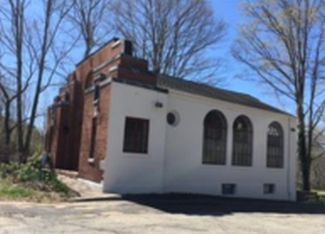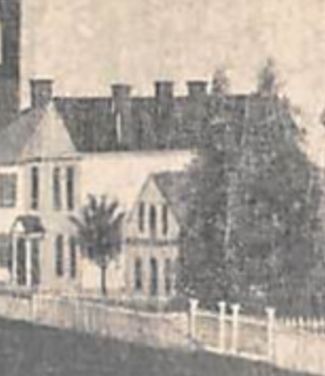10 Church Street - United Brethren of Hebron Synagogue

This is one of the most architecturally sophisticated buildings in Hebron dating from the mid-20th century. It was designed by Ira Turschen who was born in Russia and was part of a large immigration of urban Jews to rural Connecticut. Baron De Hirsche, a wealthy Jewish financier, enacted a plan in the late 1880’s to train Jewish immigrants as progressive farmers to settle on New England farms. Throughout Hebron, Colchester, Lebanon, and Chesterfield, groups of Jewish immigrants set up poultry and sometimes dairy farms. In the early 20th century, many families in Hebron Center spoke Yiddish as a second language.
Think about it
Notice the date on the building. What would the dates be if the Synagogue were dedicated today?
This is one of the few examples of Art Deco architecture in Hebron. Look at how it blends in with older buildings and how its details are different.
Gilbert House
no longer standing
In the early 1800’s the site next to where the United Brethren Synagogue stands was the home of Ralph Gilbert, a successful Hebron lawyer and the cabinet making shop of his hearing-impaired brother William Pitt Gilbert.

Courtesy of Nathan Liverant and son, Kevin Tulimieri photograph
William Pitt Gilbert was one of the 5 deaf children of Sylvester Gilbert a successful lawyer and politician. Each of the children found a meaningful role in the Hebron community. Due to his lack of hearing William Pitt Gilbert produced furniture in his own idiosyncratic manner and labeled his pieces to increase business. Much of William Pitt Gilbert's furniture was sold by his uncle who ran a furniture wareroom in Norwich. In the early 1800’s Hebron Center had two furniture making shops across the street from each other. Neither William Pitt Gilbert’s nor his neighbor John Graves shop exist today
Where to go next
Continue to walk south along Route 85





